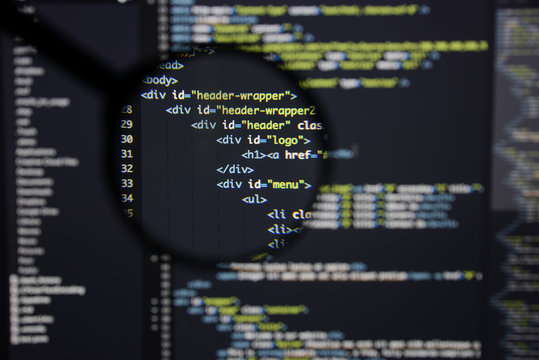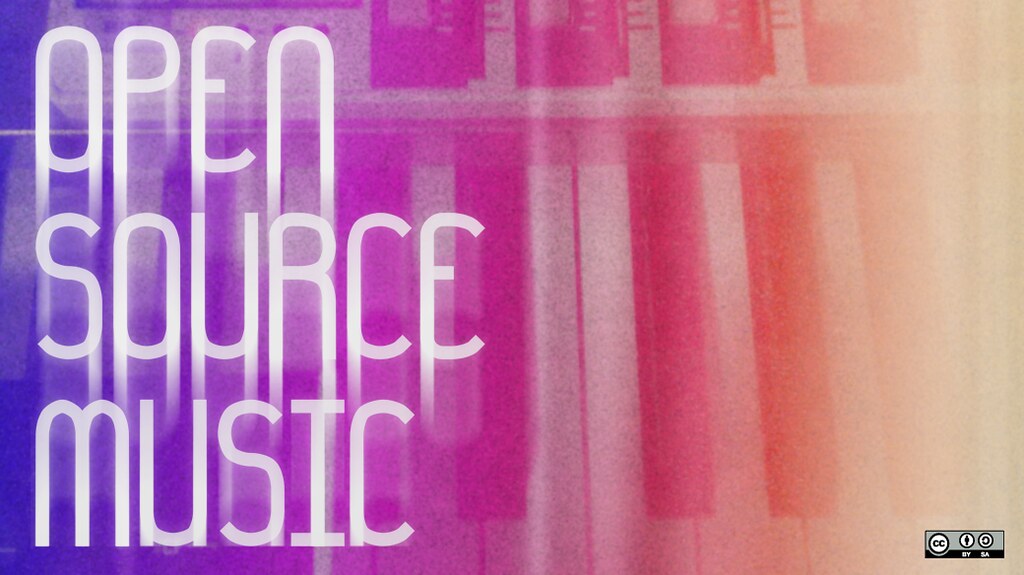Have you ever wondered how your favorite artists create the music that you love? Music production is the process of creating and manipulating sounds to create a cohesive piece of music. While music production used to require expensive and complex equipment, today’s music producers can use software to create high-quality music from the comfort of their own homes. In this comprehensive guide, we will answer the question “how does music production work,” and provide you with a step-by-step guide to getting started with music production software. We will also cover various music production techniques, including recording, MIDI, editing, and mixing and mastering, as well as provide tips and tricks for improving your music production skills. By the end of this guide, you will have a better understanding of music production software and techniques and be on your way to creating your own high-quality music tracks.
Table of Contents

Music Production Software
Music production software is the backbone of modern music production, also known as digital audio workstations (DAWs). It provides users with the ability to record, edit, and mix audio tracks in a variety of ways, giving full control over the sound of the music. There are different types of music production software available, each with its own set of advantages and disadvantages.
Types of Music Production Software
There are several types of music production software, including:
-
Digital Audio Workstations (DAWs): They are the most common type of music production software and simulate a recording studio environment. DAWs are used to record, edit, and mix audio tracks and often come with a range of built-in effects and virtual instruments.
-
Plug-ins: These are software add-ons that can be used with a DAW to add extra functionality. They can be used to create a variety of effects, such as reverb, delay, and distortion.
-
Virtual Instruments: These are software versions of traditional instruments, such as drums, guitars, and keyboards. They are played using a MIDI controller and can be edited and manipulated like any other audio track.
Choosing the Right Music Production Software
When choosing music production software, there are several important factors to consider, such as:
-
Compatibility: Ensure that the software is compatible with your operating system and hardware.
-
Features: Consider the features you need, such as the ability to record multiple tracks simultaneously or the ability to use virtual instruments.
-
Ease of use: Look for software that is intuitive and easy to use, with a clear and well-designed interface.
-
Price: Consider the price of the software, as well as any additional costs, such as plug-ins or virtual instruments.
Popular music production software options include:
-
Ableton Live: This is a popular DAW that is known for its live performance capabilities.
-
Logic Pro X: This is a popular DAW used by many professional musicians and producers.
-
Pro Tools: This is a popular DAW commonly used in professional recording studios.
Music production software is essential to produce music, and as such, selecting the right one is crucial.

The Power of Collaboration in Music Production
In the world of music production, collaboration is a key component in creating something truly unique and special. Through my personal experience in music production, I have learned that working with others can bring about challenges, but the rewards are often worth it.
One particularly memorable experience for me was collaborating with a fellow musician, Sarah, whom I met through a music production forum. Despite having different backgrounds and styles, we were both passionate about using music to express ourselves and connect with others.
At the beginning of our collaboration, we found it challenging to find common ground between our styles and visions for the project. However, through open communication and a willingness to compromise, we were able to create a sound that we both loved. We spent countless hours perfecting each element of the track, from the melody and lyrics to the mixing and mastering.
After weeks of hard work, we had a finished product that we were both proud of. We released the track on a popular music streaming platform and were amazed by the positive response we received from people all over the world. It was inspiring to see how our music resonated with others and how it could bring people together.
This collaboration taught me the importance of communication and compromise in any creative collaboration. Whether working with fellow musicians or a team of producers, taking the time to listen and understand each other’s ideas and perspectives can lead to amazing results. The power of collaboration in music production cannot be overstated; it has the potential to create something truly unique and impactful.

An Overview of Popular Music Production Software
Music production software is essential for musicians and producers looking to create high-quality recordings and mixes. With so many options available, it can be challenging to choose the right software for your needs. In this section, we will take an in-depth look at some of the most popular music production software options.
Ableton Live
Ableton Live is a widely used digital audio workstation (DAW) that is highly regarded for its live performance capabilities. Its user-friendly interface and powerful features make it an ideal choice for musicians looking to create and perform music in real-time.
One of the standout features of Ableton Live is its Session View, which allows you to create and trigger different clips and loops on the fly. This feature is particularly useful for live performance, improvisation, and experimenting with new sounds and ideas.
Logic Pro X
Logic Pro X is a DAW that is popular among professional musicians and producers. The software offers a wide range of powerful tools and features that make it a top choice for creating high-quality recordings and mixes.
One of the standout features of Logic Pro X is its extensive range of virtual instruments, including a wide variety of synths, drums, and keyboards. These instruments can be played using a MIDI controller and edited and manipulated like any other audio track, making it easy to create complex arrangements and sounds.
Pro Tools
Pro Tools is a professional-grade DAW that is widely used in recording studios. It offers a range of powerful tools and features that make it an ideal choice for creating high-quality recordings and mixes.
One of the standout features of Pro Tools is its ability to handle large and complex projects with ease. Whether you’re working on a full-band recording or a complex film score, Pro Tools can handle the job with ease, thanks to its powerful processing capabilities and intuitive interface.

Getting Started with Music Production Software
Once you have selected your music production software, it’s time to start using it. Here are the basic steps to set up your workspace and create a project:
Setting up Your Workspace
To begin your music production journey, you will need a computer, music production software, and an audio interface. An audio interface is a device that allows you to connect your instruments, microphones, and other audio equipment to your computer. Once you have your equipment, you can set up your workspace for optimal music production.
-
Choose a quiet space: Choose a quiet space where you won’t be disturbed while recording. This could be a spare room or a closet.
-
Arrange your equipment: Arrange your computer, audio interface, and other equipment in a way that is comfortable and convenient for you.
-
Consider acoustic treatment: Consider acoustic treatment, such as sound-absorbing panels, to improve the sound quality of your space.
Understanding the Interface
Once your workspace is set up, it’s time to familiarize yourself with the software interface. The interface can be intimidating at first, but with a bit of practice, you’ll soon be navigating it like a pro.
-
Track view: The track view is where you will see all of your audio tracks. Each track represents a different instrument or sound.
-
Mixer view: The mixer view is where you will adjust the levels and effects of each track.
-
Transport controls: The transport controls are used to play, stop, and record your music.
Creating a Project
Creating a new project in music production software is simple. Follow these steps:
- Open your music production software.
- Choose “New Project” or “New Session.”
- Choose a name for your project and select your preferred settings, such as the tempo and time signature.
- Create a new track for each instrument or sound you want to record.
- Import audio files or record new tracks using a microphone or virtual instrument.
By following these steps, you will be able to set up your workspace and create a new project in your music production software. With a bit of practice, you’ll soon be on your way to creating high-quality music tracks.

Music Production Techniques
Once you have set up your workspace and created your project, you can start recording and editing your music. To help you get started, here are some essential music production techniques:
Recording Techniques
Recording is a crucial part of music production, and there are several techniques you can use to achieve the best possible sound:
-
Microphone placement: Proper microphone placement is crucial to getting a good sound. Experiment with different microphone positions to find the best placement for each instrument.
-
Recording levels: Set your recording levels correctly to avoid distortion and clipping.
-
Room acoustics: Consider the acoustics of your recording space. Experiment with various microphone types and placements to achieve the best possible sound.
MIDI and Virtual Instruments
MIDI and virtual instruments are powerful tools that can be used to create a wide range of sounds and effects:
-
MIDI: MIDI stands for Musical Instrument Digital Interface. It is a protocol that allows electronic instruments to communicate with each other. You can use it to control virtual instruments and effects within your music production software.
-
Virtual instruments: Virtual instruments are software versions of traditional instruments, such as drums, guitars, and keyboards. You can play them using a MIDI controller, and edit and manipulate them like any other audio track.
Editing and Arranging
Editing and arranging are critical parts of the music production process. To help you get started, here are some essential techniques:
-
Cutting and pasting: Use the cutting and pasting tools in your music production software to edit your audio tracks.
-
Automation: Use automation to adjust the levels and effects of your tracks over time. This can be used to create dynamic and interesting soundscapes.
-
Arranging: Arrange your tracks to be cohesive and pleasing to the ear. Consider the structure of your music, such as verses and choruses.
By utilizing these techniques, you can create high-quality music and take your music production skills to the next level.

Mixing and Mastering Techniques
After creating and arranging your tracks, the final stage of the music production process is mixing and mastering. Here, you’ll balance and adjust the levels and effects of your individual tracks to create a cohesive and pleasing sound.
Mixing
Mixing is a critical process that can make or break your final production. It involves manipulating the levels and effects of individual tracks to create a balanced and polished final product. Here are some basic techniques to get you started:
-
EQ: EQ, or equalization, is a key tool for making sure your tracks aren’t too bass-heavy or treble-heavy. Adjusting the frequency balance of your tracks can help give them the right tone and balance.
-
Compression: Compression helps to control the dynamic range of your tracks, making the quieter parts louder and the louder parts quieter. This can help to create a more consistent sound throughout your track.
-
Effects: Effects like reverb and delay can add depth and interest to your tracks. Be careful not to overuse them, but experimenting with different effects can help you find the perfect balance.
Mastering
Once you’ve finished mixing, the next step is mastering. This involves preparing your final mix for distribution by making sure it sounds great on a variety of different playback systems. Here are some basic techniques to get you started:
-
Volume and loudness: Adjusting the overall volume and loudness of your track is a key part of mastering. You want to make sure your track is consistent with other tracks in your genre, and that it doesn’t sound too quiet or too loud.
-
Equalization: Equalization helps to balance the frequency spectrum of your track, making sure there aren’t any harsh or muddy frequencies. It can also help to bring out certain elements of your mix.
-
Limiting: Limiting is a crucial tool for preventing clipping and ensuring your track stays within the desired loudness range. It can help to boost the perceived loudness of your track without causing distortion or other problems.

Tips for Collaborating with Other Musicians and Producers
Collaborating with other musicians and producers can be an excellent way to learn new techniques, gain new insights, and create something unique. However, it can be challenging, especially if you are working with people who have different creative visions or working styles. Here are some tips for making the most of your collaborations:
Communicate Clearly
Making sure you are on the same page with your collaborators from the outset is crucial. Discuss your goals, creative vision, and expectations, and make sure everyone is clear on what they are responsible for. Miscommunication can cause frustration and setbacks, so it’s essential to establish clear communication from the start.
Be Open-Minded
Collaborating with others can expose you to new ideas and perspectives. Be open-minded and willing to try new things, even if they are outside of your comfort zone. You may discover new techniques or approaches that you had not considered before.
Respect Each Other’s Time and Schedules
It is essential to be respectful of each other’s time and schedules. Set realistic deadlines and goals, and make sure everyone is aware of what is expected of them. Be mindful of each other’s time zones, work schedules, and personal commitments to avoid unnecessary delays or misunderstandings.
Be Flexible
Collaborating with others requires compromise and flexibility. Be prepared to adapt your creative vision and working style as needed. It is essential to remain open to feedback and willing to make adjustments to ensure everyone is happy with the final result.
Remember, collaboration is about working together to achieve a common goal. By following these tips, you can establish productive and enjoyable collaborations that produce outstanding results.
Conclusion
In conclusion, music production is a fascinating process that requires a perfect blend of technical skills and creativity. With the right music production software, tools, and techniques, you can create high-quality music from the comfort of your own home and unleash your creativity. Whether you’re a seasoned professional or a beginner, take the time to experiment and find your unique sound. Remember that music production is a continuous learning process, and with patience, persistence, and a willingness to learn, you can accomplish incredible things in the world of music production.
Don’t forget to check out our other content to learn more about music production techniques, software, and tools to take your music production skills to the next level!


